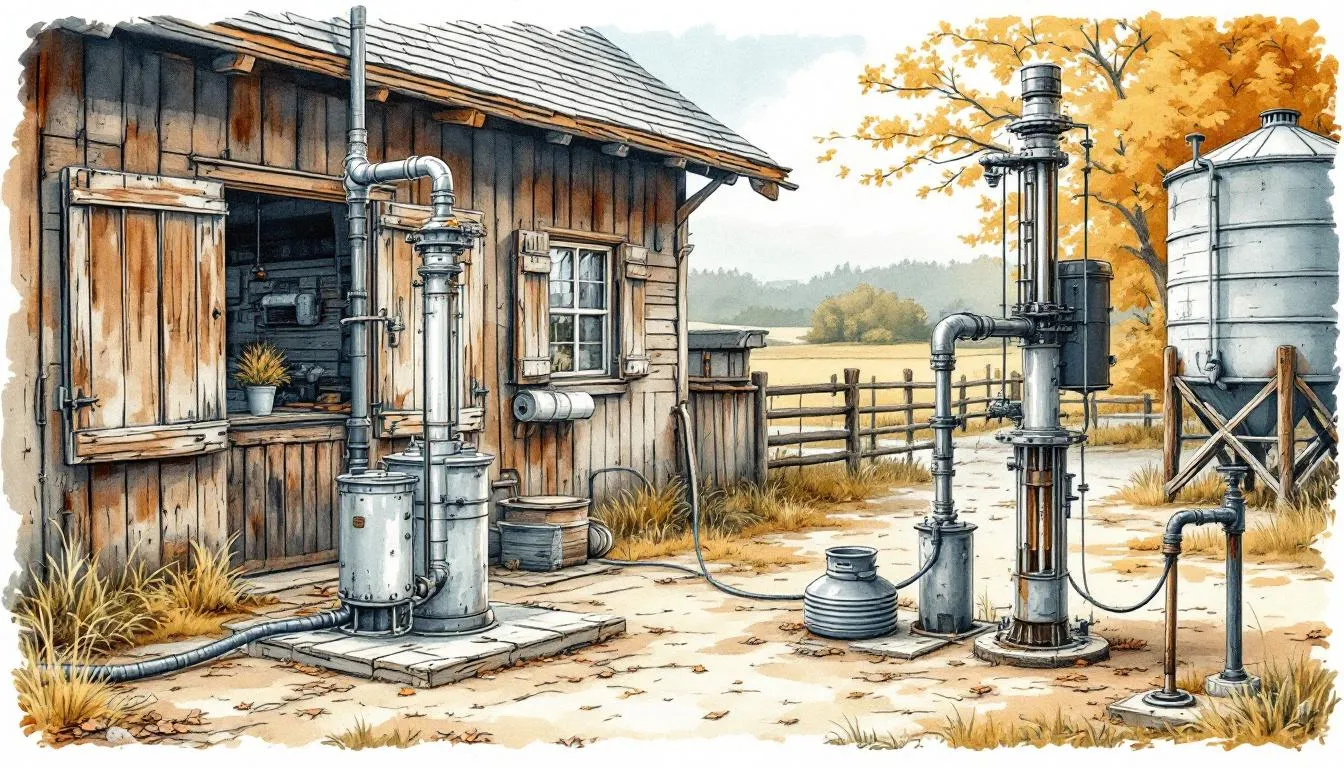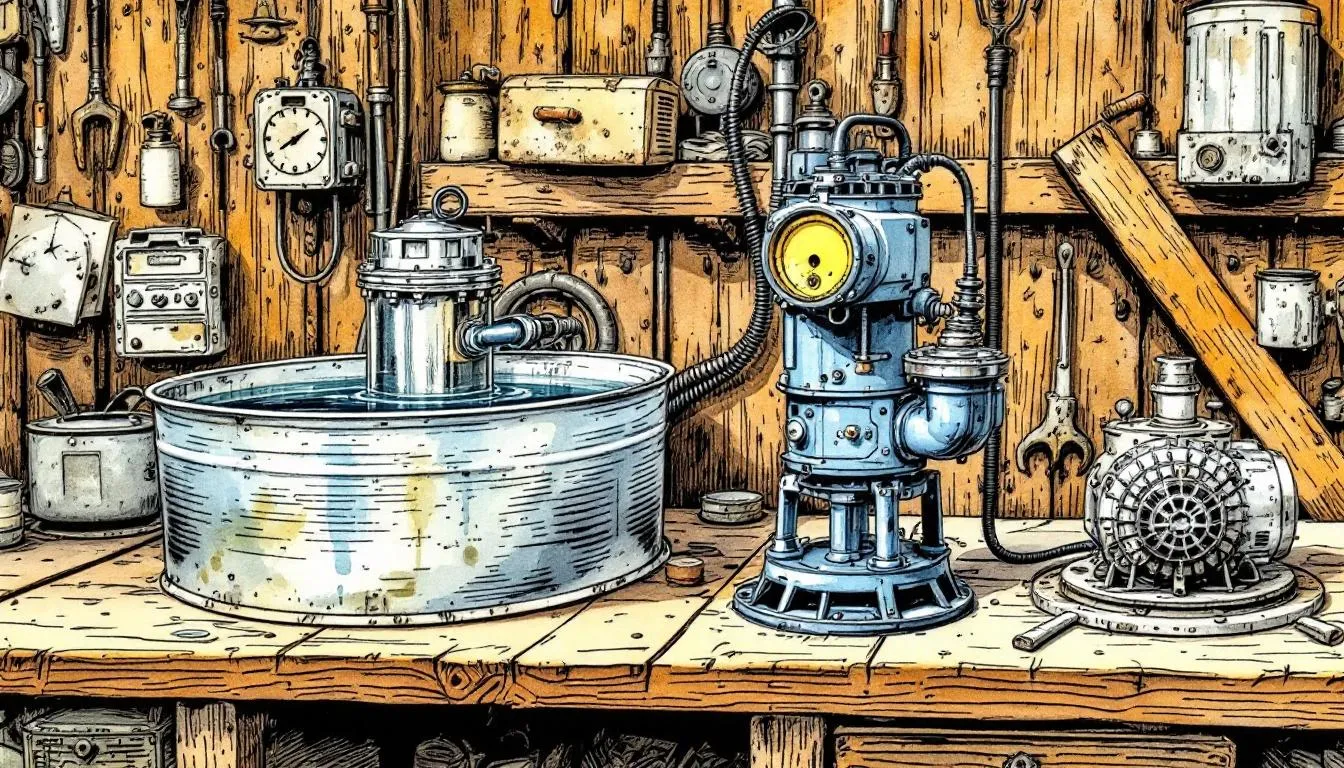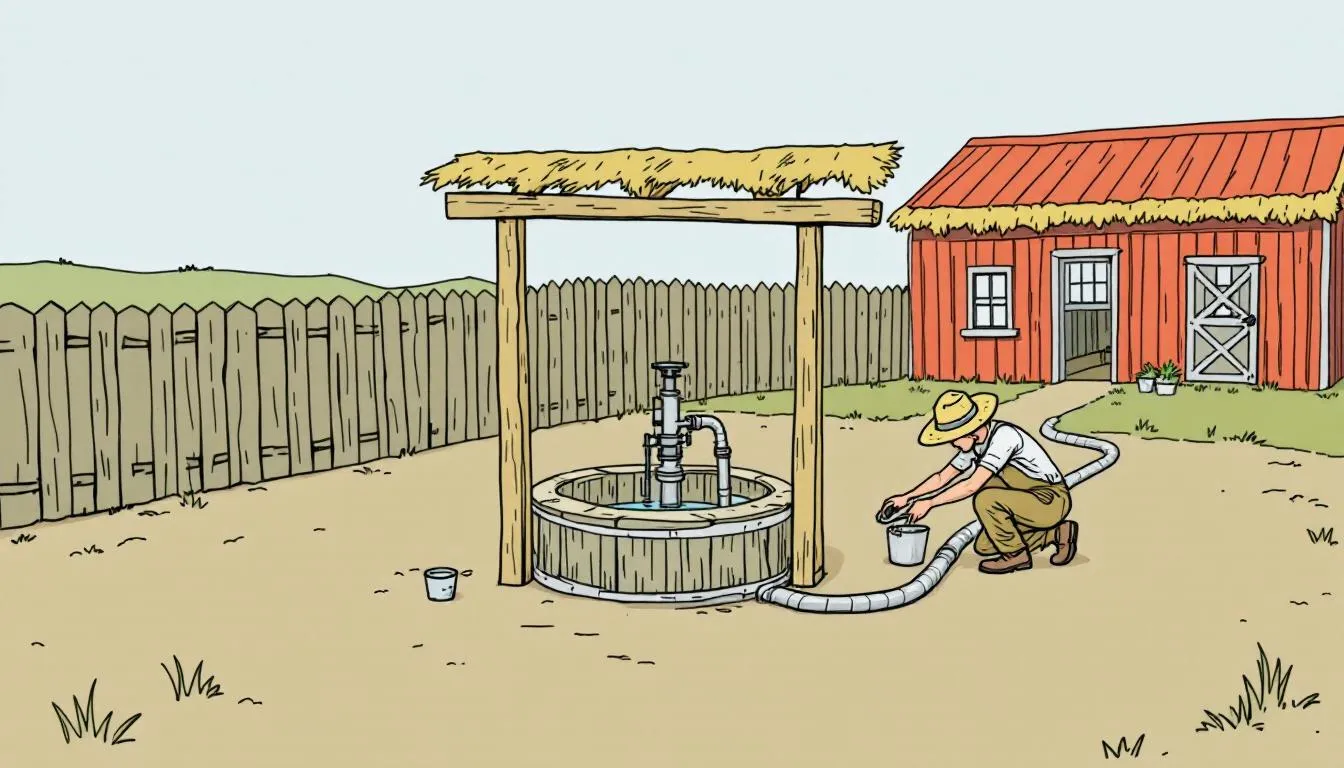Top Water Well Pump Solutions for Reliable Water Supply
Need a reliable drinking water supply? A water well pump is essential. This device draws water from underground sources, ensuring consistent access. Here, we break down pump types, their advantages, and how to choose the right one for your needs.
Key Takeaways
- Water well pumps are crucial for accessing underground water.
- Regular maintenance and timely replacement are essential for a steady supply and avoiding costly breakdowns. Watch for warning signs.
- Choosing the right pump depends on well depth, water demand, and installation quality. Protect your well from contamination for safe, efficient water.
Introduction to Private Water Systems
Private water systems serve millions, providing direct access to underground aquifers. Unlike city water, wells are independent and must be properly constructed to prevent contamination. The Water Systems Council offers guidance to help well owners keep water safe.
Well construction and pump selection are critical. Submersible pumps serve deep wells; jet pumps work for shallow wells. Local health departments regulate private systems and enforce construction standards to protect public health.
Regular water testing is a must. Monitor for bacteria, chemicals, or pollutants. Stay proactive to protect your water and ensure safety year-round.
Types of Water Wells
Wells are tailored to the environment: Dug wells are large holes, lined with brick or concrete, and draw water near the surface (high risk of contamination). Drilled wells go deep and use sturdy casing for cleaner, safer water. Driven wells use a pipe and screen for shallow, loose soils; quick to install but vulnerable to surface pollutants.
Shallow wells (any type) are more easily contaminated. Use proper construction—sealed linings and caps—to keep water safe. Rock (consolidated) wells drilled into bedrock offer extra protection, as solid rock naturally blocks contaminants.
Understanding Well Pumps

Well pumps pull water from underground into your home or field. Main types: submersible, jet, and hand pumps—each for different depths and applications.
Over 42 million Americans rely on private wells. Wells tap groundwater via drilling, then pumps extract it. Well output depends on depth and aquifer quality. Classify wells as shallow (unconfined), deep (confined), or dug.
Types of Water Well Pumps

Submersible pumps go inside the well. They’re efficient and reliable for deep wells. Jet pumps mount above ground for shallow wells—easy to service and affordable.
Aqua Science stocks every type. Low prices, top quality. Know your well type and depth to select the right pump.
Submersible Pumps
Installed deep and fully submerged, these push water up, reducing mechanical issues. Quiet, durable, and long-lasting.
Cost: $600–$2,100 to replace, but you get peace of mind and reliability.
Jet Pumps
For wells 25 feet deep or less. Above-ground setup—easy to maintain. Creates suction to draw water up. Great for irrigation or high water tables.
Not as powerful as submersibles for deep wells, but perfect for shallow applications.
Well Pump Materials and Durability
Pump material matters. Submersibles use stainless steel or high-grade plastic for corrosion resistance and long life. Jet pumps come in both shallow and deep-well versions; material choice (steel vs. plastic) affects performance.
Regular testing and maintenance prevent failures. Webtrol’s “Pump Hall of Fame” proves quality pumps last for decades with proper care.
Signs Your Water Well Pump Needs Replacement
- Inconsistent or dropping water pressure
- Unusual noises (grinding, humming, rattling)
- Sediment or dirt in your water
- Frequent cycling or continuous running
- Electric bills are suddenly higher
- System is 10–15 years old
Any of these? Time for an inspection—or a replacement.
Emergency Well Pump Services

Pump failure? Act fast. Aqua Science offers rapid, affordable emergency service. Call 800-767-8731—diagnostics are free. Most pump replacements take just 2–3 hours on-site.
DIY Troubleshooting Tips
- Check the breaker—tripped switches cause most issues.
- Low pressure? Circuit breakers and pressure switches are common culprits.
- Pump running constantly? May indicate water demand is too high or a faulty pressure switch.
- Air in lines = low well water. Check water levels and pump operation.
- Bypass your water softener to see if it’s causing pressure problems.
Proper Well Pump Installation

Professional installation protects your investment. Avoid DIY disasters—hire experts for:
- Code-compliant, safe installations
- Airtight, watertight joints
- Sealing the casing with grout to block contaminants
Right location and quality install mean fewer problems down the road.
Regular Maintenance for Well Pumps
- Inspect for leaks, wear, and odd noises.
- Clean pump parts as recommended.
- Monitor water levels—never let the pump run dry.
- Replace worn components and lubricate as needed.
- Check electrical connections.
Protecting Your Well from Contamination

Keep chemicals, oil, and hazardous materials far from your well. Use well caps and sanitary seals. Inspect for cracks and damage. Divert runoff away and keep the area clear of debris and animals. Salty or polluted soil? Monitor more closely.
Water Quality Testing
- Test at least annually—and after major storms or nearby construction.
- Screen for bacteria, parasites, viruses, and chemicals.
- Initial comprehensive testing, then focus annually based on results.
- Address nuisance minerals (iron, manganese) for taste and appearance.
Use chlorination, filtration, or UV if contamination is found. Local health departments provide test guidance.
The Role of Local Health Departments
- Identify contamination risks
- Recommend the right tests
- Offer free screenings (e.g., ‘Test Your Well’ events)
- Inspect well components and enforce regulations
Partner with your local department to keep your water safe.
Choosing the Right Pump for Your Well
Get the right pump—optimize water delivery, efficiency, and cost. Stainless steel submersible: best for deep wells. Jet pump: best for shallow wells. Factor in well depth, yield, and pump efficiency. Correct sizing pays off long-term.
Summary
Reliable well pumps mean reliable water. Choose wisely, maintain regularly, and know when it’s time for a replacement. Follow these guidelines to keep your water clean, safe, and flowing—year after year.
Frequently Asked Questions
What are the signs that my well pump needs replacement?
Inconsistent pressure, odd noises, sediment, rising energy bills, or pumps older than 10–15 years? Time for a replacement.
How often should I test my water quality?
At least once a year. After heavy rain or changes near the wellhead, test again. Don’t get lazy—safe water requires vigilance.
What’s the difference between submersible and jet pumps?
Submersibles are for deep wells, installed in the water. Jet pumps are above ground and for shallow wells. Depth determines the choice.
How can I protect my well from contamination?
Keep chemicals away, seal the well, direct runoff, and inspect regularly. No shortcuts.
What role do local health departments play?
They find contamination sources, offer free tests, and keep your installation legal. Don’t ignore their advice.

Validate your login